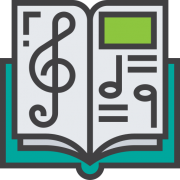Hearing loss should not be the determining factor of whether a student will be able to participate and succeed in music classes. Effective accommodations can remove barriers and allow deaf students to equally participate.
Here are some example questions:
What is the student’s goal in taking this particular course?
What is the student’s previous interactions and experience with music including performing in a band, small group, and/or solo?
What strategies has the student used to navigate music in the past (e.g. residual hearing, assistive technology, interpreters, captions, noise-canceling headphones, etc.)?
What concerns does the student have with the course syllabus and accessing any assignments or exams?
Equitable Course Requirements
Ensure course requirements are not inherently discriminatory or exclude deaf students from the opportunity to complete the class. Requirements should detail desired outcomes (functional) rather than how tasks should be accomplished (organic).
Here is a sample course objective with organic requirements:
Aurally identify the salient characteristics of a musical performance. This will include both small-scale observations, such as instrumentation and timbre, and large-scale ones, such as style and form.

When the term “aurally” is removed — “Students will identify the salient characteristics of a musical performance” — the course objective no longer dictates how the student must accomplish this objective and opens the opportunity to showcase their knowledge and skills in other ways.
Aural identification of music may also be a struggle for hearing students. Students who may be visual or kinesthetic learners could benefit from a broader definition of identifying musical elements.
Other Access Strategies
Other strategies for participation in music courses include:
- Read and mark sheet music or scores to identify specific styles, form, texture, melody, dynamics, etc.
- Instrument identification by name through drawing, photo images, and video recordings.
- Researching literature and historical contexts about a genre, artist, composer, or song.
- Lyrical analysis.
- Composing or performing music utilizing a learned style.






